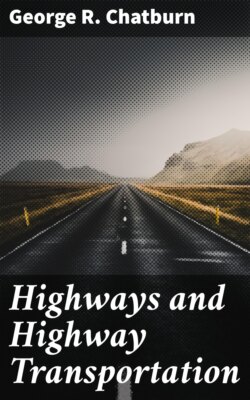Читать книгу Highways and Highway Transportation - George R. Chatburn - Страница 25
На сайте Литреса книга снята с продажи.
Conclusion.
ОглавлениеTable of Contents
—If the story, very briefly given, of these old roads does not verify the thesis that transportation is a measure of civilization, a view might be taken of the tribes and peoples now living in the various parts of the earth. If the character of the transportation of the tribes of Africa and of Asia, of the Arctic and Antarctic regions, the least civilized now known, be compared with that of those nations considered most civilized, the same general conclusion would be drawn. Compare the railways, canals, highways, cars, automobiles, ships, and aircraft of the present-day United States with the pack animals and ox-carts of many less favored nations and the further evidence of amount of traffic and travel per person, will be unnecessary to establish the relative states of civilization. It is not necessary even to go beyond the confines of the great American Republic. Writers who traveled through it in the ’forties, ’fifties and ’sixties are wont to call attention to the uncouthness of the inhabitants, to the lack of the refinements of speech and manners characterizing those who dwelt in the more populous communities. But the honesty, integrity, generosity, willingness, and ability of the American pioneers to dare and to do, were unquestioned. It is a pity that many of the best traits of humanity disappear when people are crowded into cities, when their wants and desires are increased, when the refinements of civilization have replaced the ruggedness of pioneer life. Then, as now, upon the action of a bare majority, which in a republic is called “the will of the people,” often hung the political, social and financial destiny of the nation. A slight change would have changed the course of civilizing evolution; who knows whether for good or ill. As the trivium and quadrivium were the roads, believed by the ancients to lead to a liberal education, so the government and the civilization of this now great nation has rested consecutively in its upward progress, upon the slender path of the aborigine, swelled to the well defined trail of the pack-train, broadened into the cart and wagon road, cast up into a turnpike; and upon the rippling trace of the light canoe, the dugout, the keel-boat, the pole-boat, the flat-boat, the canal-boat and the steam-boat; all to be supplanted by the thunder of the locomotive. What in the process of evolution will follow it? The automobile, the truck, the flying machine? Time alone can tell.
